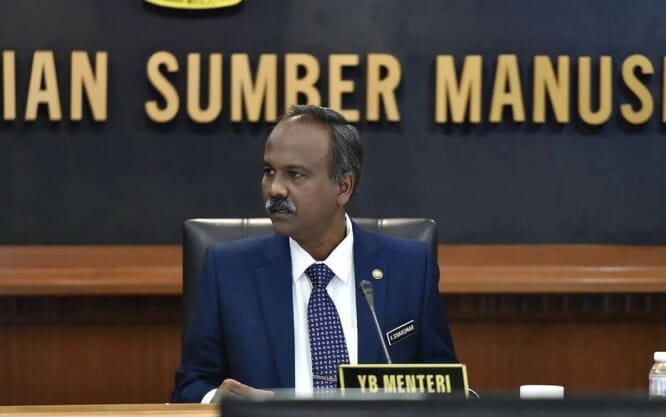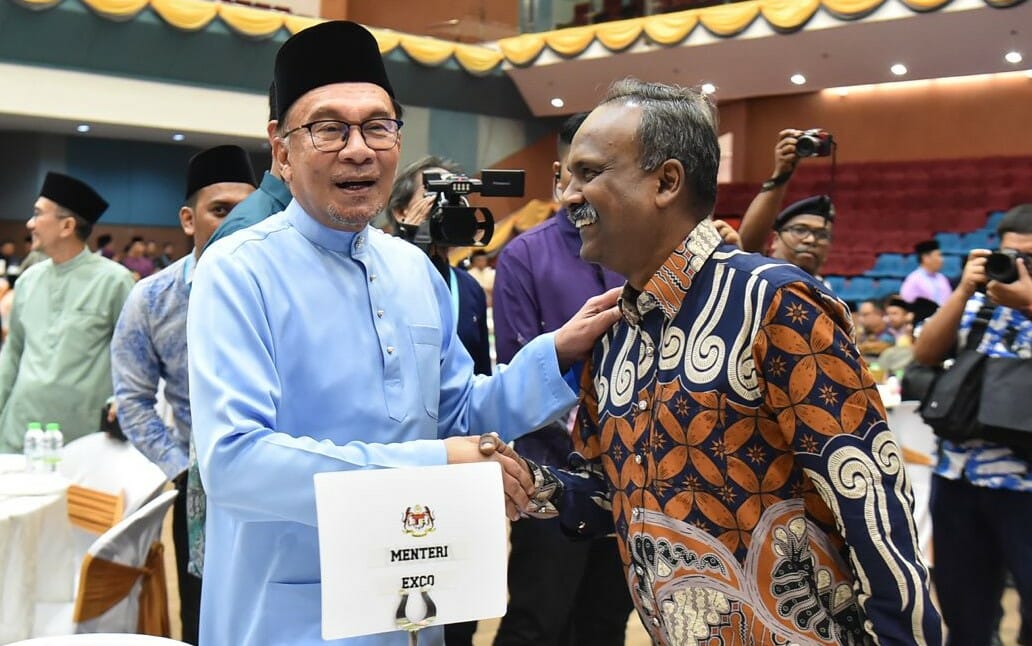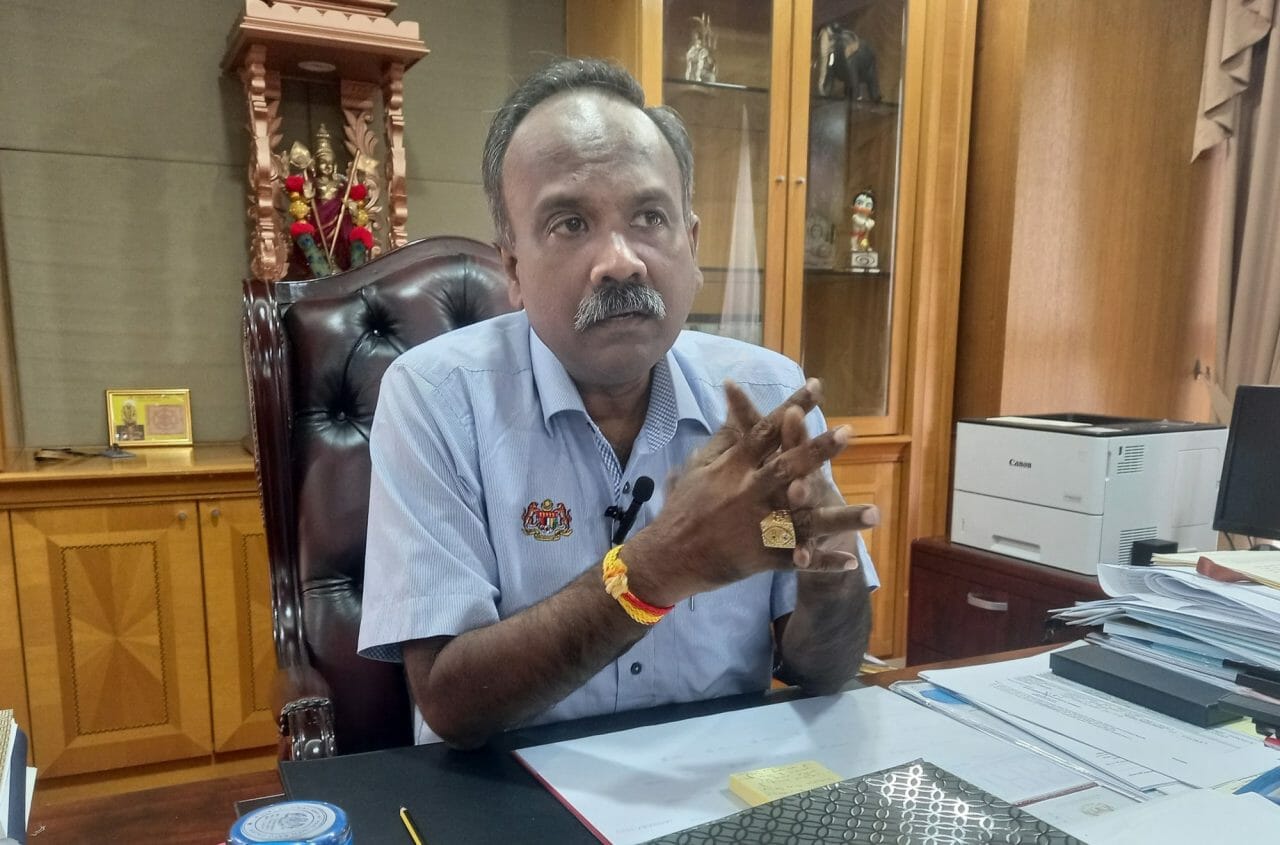The availability of a skilled workforce is necessary to support the transition of all economic sectors towards knowledge-intensive activities, drive labour productivity gains, and attract investment into Malaysia. Human capital development is a critical enabler for driving and sustaining Malaysia’s economic growth.
An efficient and inclusive labour market will resolve mismatches in workforce demand and supply, and enable all Malaysians to participate in and benefit from the nation’s economic growth. Investments in education also play a pivotal role in improving social mobility and the wellbeing of the rakyat.
Right from the outset, keen focus has been given towards addressing and implementing measures to improve the conditions of Malaysia’s workforce by the Ministry of Human Resources (MOHR).
Driving towards results, the Minister of Human Resources V. Sivakumar (pic) has been instrumental in uplifting the labour market, both in terms of addressing the shortfalls of its demand and improving the quality of life for each worker in Malaysia.
In an exclusive interview with BusinessToday recently, the Minister was fervent on taking charge to ensure that there is sufficient manpower supply across Malaysia, which he sees as critical as there exists a shortfall in many economic sectors due to the effects of the pandemic.
“Over 700,000 foreign workers left during the dark period and the Home Ministry along with MOHR has recently reopened the quotas for foreign labour in five critical sectors, especially in agriculture, construction, manufacturing and the service industries. These sectors have encountered huge losses, not to mention being unable to meet demand, both on the macro and micro levels and a solution must be found to strengthen the labour force. This why the government chose to relax and recalibrate the entry of foreign labour to bring the workers back as soon as possible.”
People have lost jobs; they could not feed their families while companies had to survive with a faster depleting bottom line. This painted a bleak picture for the workers, the business community, the Malaysian economy and the government who had to watch the nation’s decline with under some conditions of helplessness, he said.
Aside from the five sectors, restaurants and other service-related businesses are suffering due to the lack of manpower. These businesses need support.
A Mismatched Labour Force
Sivakumar said among the critical nature which faces the Malaysian labour force currently, is the factor of mismatched skillsets of a worker in comparison to what is needed by the employers spread across various industries. In order to bridge this gap, the Government has to spend around RM6.7 billion to intensify Technical And Vocational Education And Training (TVET) alone, which is a huge sum.
More importantly, we have to build the right talent by producing graduates with the skills that are required by the market, aside from having people invest in huge sums of money on education, only to attain mismatched jobs which is a waste. Under this aim, MOHR has launched collaborative measures with the private sector.
“It’s my objective to see 100 employers sign on 100 employees under the TVET programme by end of 2023 and this is off to a good start where leading companies have played an important role. The Government will produce the premise. The Training Institute’s will help provide the faculty and trainers for students to be trained with industrial driven modules for instance, in technology advancements needed by these companies or employers in general. This will save cost and time for both the worker and the industry.
Sivakumar said following a meeting on Dec 7, 2022, Malaysia’s Council of Ministers made the decision to transfer the National TVET Council Secretariat (MTVET) solely to the Ministry of Human Resources (MOHR). In line with this decision, MOHR is ready to assume the role through comprehensive work, with the support of the TVET ecosystem from within the Ministry. These include managing TVET regulatory agencies, training and existing training fund providers, as well as the cooperation of all TVET stakeholders from the government and private sectors.
Prime Minister Datuk Seri Anwar Ibrahim suggested that the private sector and government-linked companies (GLCs) step up their involvement and cooperation in such efforts.
He said this was important to meet the needs of industries and resolve problems like mismatch between the training provided and industry requirements as well as unsatisfactory facilities.
“I have proposed that immediate measures be taken. We have studies and committees to ensure that our children are trained for jobs that provide a reasonable income,” he said recently, adding, as an example, PETRONAS could use its expertise to manage the TVET centre in Pengerang, Johor to cater to their needs and DRB-Hicom in Pekan, Pahang, Sunway and Berjaya groups could provide training for their relevant sectors.
Anwar said the Budget 2023 allocation for TVET RM6.7 billion covering various ministries, departments, agencies and 500 public skills training institutes with a total enrolment of about 250,000 trainees and efforts to strengthen TVET also involved various ministries and departments, including the Higher Education Ministry, Education Ministry, Rural And Regional Development Ministry, Youth And Sports Ministry, Human Resources Ministry And Giatmara.
In line with this decision, MOHR is ready to assume the role through comprehensive work, to build on the TVET ecosystem. The government has identified TVET as a ‘game changer’ for achieving inclusive growth and implemented several TVET reform policies.
However, there are many remaining challenges in foreseeing future skills demand which are harmonising the TVET governance systems, promoting equity and inclusion, and enhancing industry engagement. Along with the government’s aim to make TVET a driver of national progress, MOHR as the lead secretariat of MTVET, will be placing more focus on making TVET a key choice for Malaysians in their educational pathways.
Mindset and Perception
The holistic transformation and rebranding will be done through the injection of new synergies focused on erasing the “negative stigma” towards TVET, subsequently bringing a new paradigm that has the potential to offer career opportunities and high income in the future.
MOHR already possesses the necessary ecosystem, including overseeing the TVET regulatory agencies, and training providers and funds. The cooperation of all TVET stakeholders including the private sector employers is well established under the MOHR which practises the principles of tripartism.
MOHR also has a direct interest in ensuring that industries have all the support to succeed. It is the custodian of human resources matters and therefore the right ministry to manage TVET to meet the requirements of the labour market.
Key Pillars
Relevance to the labour market: an effective TVET system is a critical pillar of any successful economy. An effective system needs to be based on reliable labour market information and demand and employer needs, particularly in priority trades and occupations. As said, market-driven training requires collaboration and coordination with industries to determine the training needs in order to satisfy demand. This is a dynamic process as demand and industries need must keep pace with changes in technology and the rise of new skill sets.
Access for trainees: one of the fundamental aspects of a successful system is the access that it provides to trainees. It is important for trainees to be able to enrol easily in training. Increasing access can be better achieved by integrating or mainstreaming TVET into the traditional and compulsory school education system. Integrating it within the national school education system will provide greater opportunities for students to know that it can be the next step beyond compulsory education.
Quality of delivery: the quality of the system is largely determined by the industry partners; they are the key drivers of the system who work in collaboration with the operators of the system. The industry becomes more than a partner in the system, in fact it is the key driver. Industry plays the major role in the setting of occupational and competency standards. Industry is the nuts and bolts of a quality and effective system.
Inclusion of soft skills: TVET institutions around the world have realised the urgent need to prepare their students for a complex and uncertain society as well as a competitive labour market. They have accepted that soft skills are a considerable privilege for the future employees, although there is still a significant confusion over how soft skills should be defined and implemented.
Employers have begun to give priority in behavioural over technical skills, and individuals who have the pertinent soft skills are preferred over those who perhaps have more technical skills. Therefore, teaching practices concerning the development of soft skills in students of TVET education entering the labour market is extremely important.
Government’s Role
The governance landscape of TVET in Malaysia still involves 12 ministries, and although that provides benefits in terms of breadth, there are definite challenges due to this governance structure. The establishment of MTVET is a government manifestation in improving the coordination of the country’s TVET ecosystem in the effort to ensure the route as a national agenda. Through MTVET, three strategic thrusts, namely integrated and coordinated governance, industry-driven TVET and TVET shaping the future have been outlined to empower the programme as a national agenda.
The strategic collaborations should do the rest.
Let’s not forget, Sivakumar said, TVET is the main driver or “game changer” to spur human capital development for the country and promotes competency-based education and training linked to industry needs. TVET students undergo classroom learning and informal learning at workplaces. Graduates are easily accepted into companies as they are better equipped to cope with the challenges. This makes TVET a viable platform to ensure that local youths and graduates will have the necessary skills that are much in demand within the country’s main industries.
One of the key benefits is its ability to help fill the skills gap in the current job market by providing students with the practical, relevant skills and training they need to succeed in specific careers, as discussed, meaning the programs are designed in collaboration with local employers, so they can be tailored to meet the specific needs of the job market.
TVET can also lead to a wide range of career opportunities where there are many high-demand jobs in a variety of industries that require technical and vocational education and training. In short, TVET can be an excellent choice for individuals who are looking for a direct path to a fulfilling and lucrative career. In today’s rapidly changing job market, it is more important to continuously learn and update our skills. This is especially true in fields that rely on technology and are subject to rapid change, such as it, manufacturing, and healthcare.
The programmes can be an excellent way to facilitate lifelong learning and career development. Many programs offer ongoing training and professional development opportunities for graduates, so they can stay up-to-date on the latest trends and technologies in their field. This type of continuous learning can help such graduates stay competitive in the job market and advance in their careers.
By providing students with the practical, in-demand skills that employers need, it can also help businesses find the talent they need to grow and thrive. This can have a ripple effect on the economy as businesses which are able to find the talent they need are more likely to expand and create new job opportunities.
The programmes can also stimulate local economies by creating jobs directly as they are designed in collaboration with local employers. This can help to create new job opportunities in the community, and can also help to retain talent by providing local residents with the skills and training they need to succeed in their careers.
The Private Sector
Strong and effective collaboration between the public and private sectors has contributed to encouraging progress and will continue to be a critical factor for the continued success of the national talent agenda. The private sector’s involvement in TVET is crucial in creating a demand-driven system that contributes towards the achievement of national goals. The TVET policy that drives quality skills development through a combination of classroom-based training and practical experience in the workplace requires greater involvement of the private sector, simply said, while reducing mismatching concerns.
The involvement of private sector will also ensure what is taught in TVET education is relevant to the needs of the private sector, as this will allow graduates to be ready for employment without long and costly retraining at the workplace. This ensures greater employability and allows people to command a better employment package.
In the long run, with a sustainable supply of skilled graduates, employers will be more confident of embracing and implementing IR4.0 in their production and services processes.











